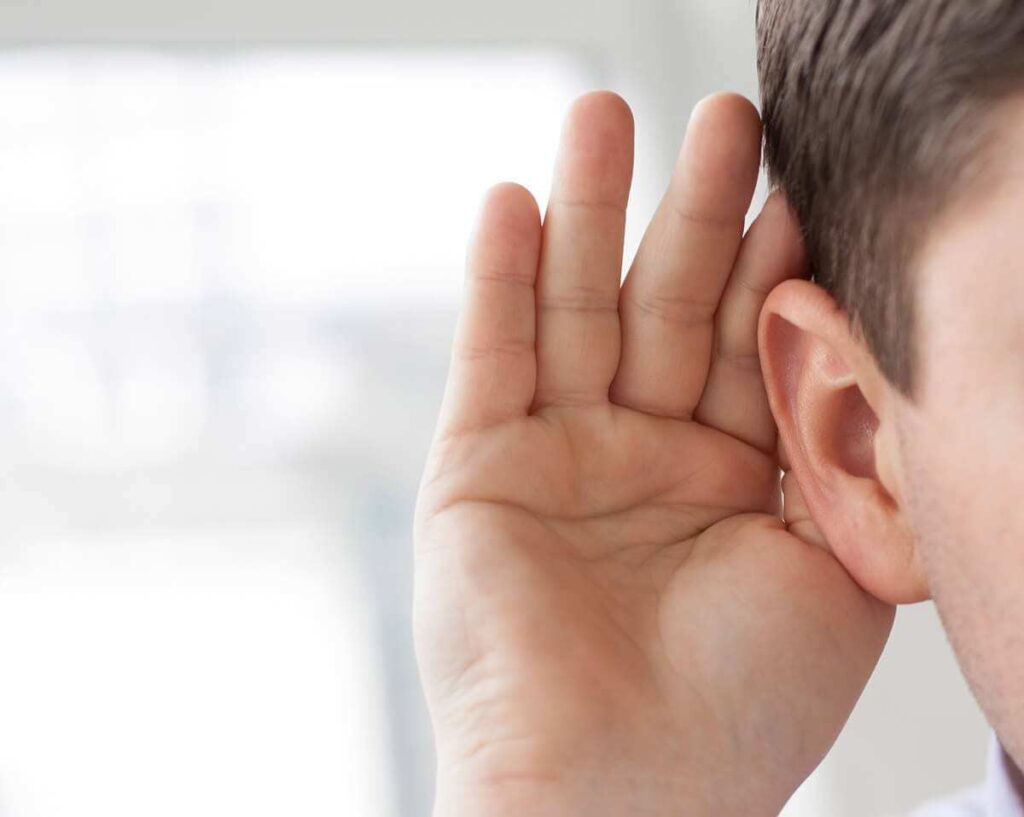Hearing, also known as audition, is the ability to perceive sound by detecting vibrations, changes in the pressure of the surrounding medium through time, through an organ such as the ear. Sound may be heard through solid, liquid, or gaseous matter. It is one of the traditional five senses; partial or total inability to hear is called deafness.
The sensing organ for hearing is the ear, specifically the cochlea of the inner ear. The cochlea converts sound waves into electrical signals that are then sent to the brain via nerves. The brain processes these signals into meaningful information about intensity (loudness), pitch (frequency), and direction. Hearing can be measured objectively using an audiometer which presents tones at specific frequencies and intensities; human perception of loudness is logarithmic so a ten-decibel increase in intensity corresponds to a perceived doubling of loudness. An audiogram charting results from an audiometer test provides a measure of someone’s relative ability to hear different frequencies; it does not give absolute values for threshold because people vary greatly in their response to pure tones at low amplitude (intensity).
There are three main types of hearing loss: conductive hearing loss, sensorineural hearing loss, and mixed hearing loss. Conductive hearing loss occurs when there is a problem with conducting sound waves anywhere along their pathway from outer ear through middle ear to inner ear; common causes include excess wax buildup in the outer ear canal, perforation (hole) in the tympanic membrane (eardrum), or otosclerosis (abnormal bone growth) that limits movement of small bones in the middle ear (ossicles). Sensorineural hearing loss arises from damage to inner hair cells or nerve fibers in the cochlea; it can be caused by exposure to loud noise over long periods of time, certain medications (ototoxic drugs), viral infections such as meningitis or measles, head trauma resulting in skull fracture or concussion, tumors pressing on nerves or blood vessels near auditory pathways, and degenerative diseases such as Alzheimer’s disease. Mixed hearing loss has elements of both conductive and sensorineural components. Audiologists and speech-language pathologists use various tests—including patient history interview/questionnaire, physical examination using an otoscope/otoscope [visual inspection], pure-tone testing using an audiometer [air conduction], impedance testing [tympanometry/acoustic reflexes], otoacoustic emissions measurement [otoacoustic emission testing], speech reception thresholds/word recognition scores—to diagnose type(s) and degree(s) of hearing impairment as well as possible causes so that appropriate treatment recommendations can be made..Treatment options depend on type(s)/degree(s) of impairment but may include surgical procedures [stapes surgery for Otosclerosis | Cochlear implantation] , amplification with Hearing Aids , assistive listening devices such as FM systems , alerting devices such as doorbell signalers , captioned media , note taking services during lectures/meetings


